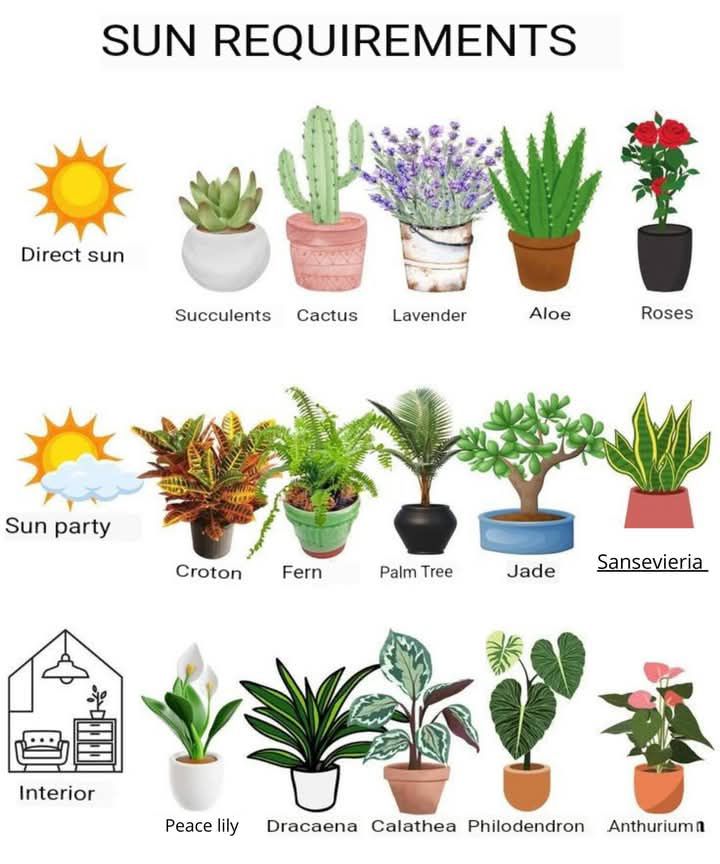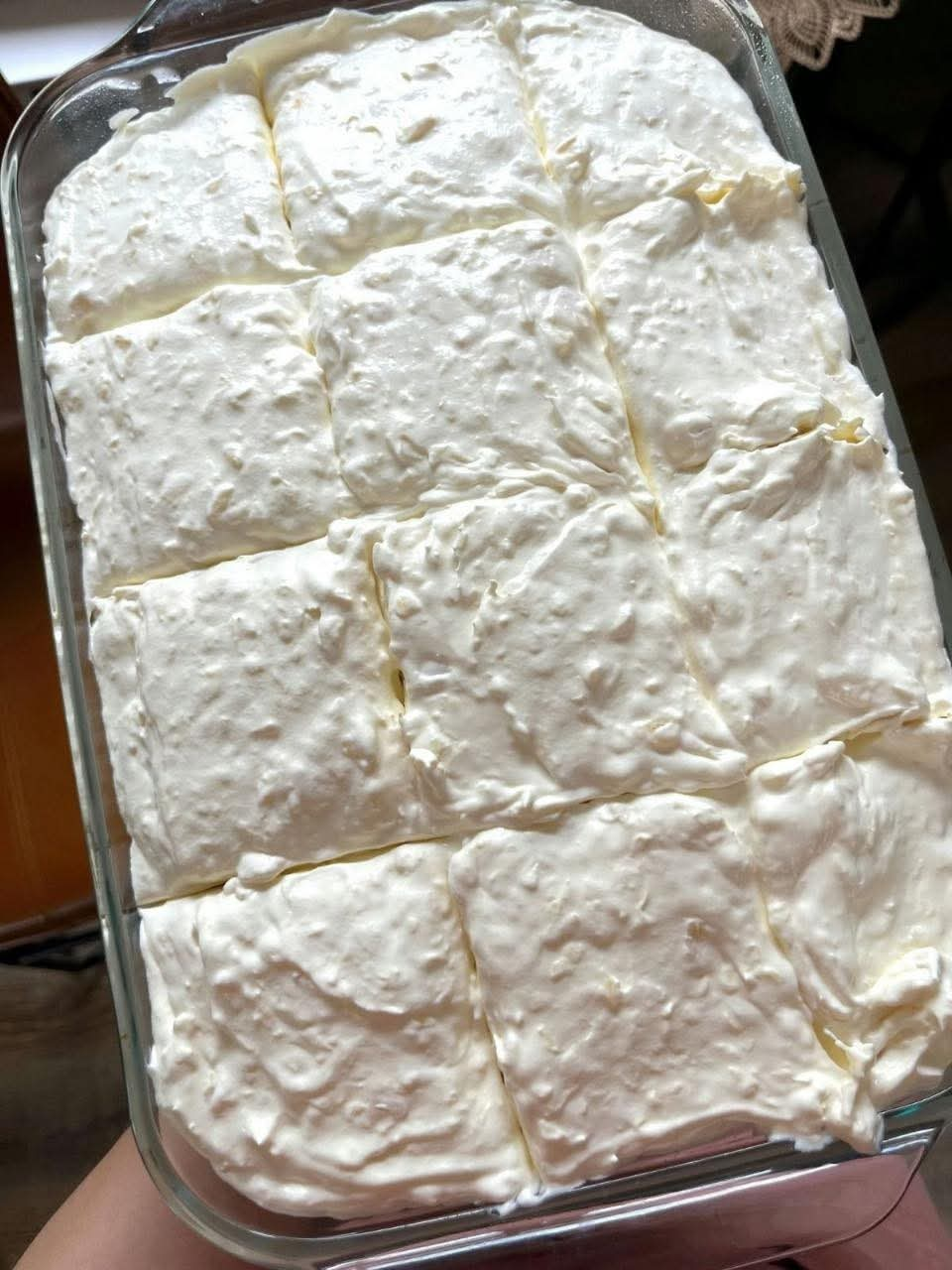One of the most crucial aspects of plant care is understanding their specific sunlight needs. Just as humans thrive in different environments, plants too have unique preferences when it comes to light. Whether you’re a seasoned gardener or a newbie looking to fill your home with greenery, knowing how much sunlight your plants need can make a significant difference in their health and growth. Let’s dive into the sunlight preferences for various types of plants so you can make sure your green friends get the right light they need!
🌞 Direct Sun Lovers
Some plants thrive in the most intense sunlight and need several hours of direct sunlight daily. These are your full-sun plants, which love being placed in bright windowsills or outdoor spaces. If you have a sun-drenched spot in your home or garden, these plants will thank you for it.
Succulents – Succulents are known for their ability to store water in their leaves, which makes them perfect for hot, sunny spots. These hardy plants don’t mind a little neglect and flourish in full sun.
Cactus – Cactus plants are true sun-seekers. They thrive in dry, intense sunlight and can handle extremely hot and arid conditions. Place them on a sunny windowsill or in an outdoor area that gets plenty of direct sunlight.
Lavender – This fragrant herb loves basking in the sun. It thrives in full sun, which helps it produce those beautiful blooms and release its signature calming fragrance. Lavender does best when it receives several hours of direct sunlight each day.
Aloe – Aloe plants need full sun to grow strong and healthy. They’re not only great for adding greenery but also useful for their medicinal properties. Place them in a bright spot to help them thrive.
Roses – Roses need at least 6 hours of direct sunlight per day to bloom beautifully. They are the quintessential sun-loving plant that thrives when given enough light and warmth.
🌤️ Partial Sun / Sun Party Plants
Some plants enjoy a bit of sun but aren’t as demanding as the full-sun lovers. These plants do best with filtered or partial sunlight, such as morning sun or bright, indirect light. They don’t need as much direct exposure to the sun but still appreciate a bit of light to thrive.
Croton – Crotons are known for their vibrant, colorful foliage, and they love bright light. While they can tolerate some shade, they will show their best colors when placed in partial sun or bright, indirect light.
Fern – Ferns prefer indirect sunlight and appreciate some shade. They thrive in partial sun where they can receive bright light without direct exposure, which can scorch their delicate leaves.
Palm Tree – While palm trees are typically associated with tropical, sunny climates, they do best when given a mix of sun and shade. They prefer partial sunlight, which mimics the dappled sunlight they’d receive in a forest environment.
Jade – The Jade plant can tolerate both bright sunlight and some shade. It does best in a location where it receives plenty of light, but it’s more flexible than succulents and cacti when it comes to sun exposure.
Sansevieria (Snake Plant) – Snake plants are incredibly adaptable, making them a great choice for almost any space. They prefer indirect light but can survive in low light, making them perfect for rooms with less natural sunlight.
🏠 Low Light / Interior Plants
Some plants are champions of surviving in low-light conditions, making them ideal for spaces with little natural light, such as bathrooms, offices, or dim rooms. These low-light plants are perfect if you want to add greenery to areas where sunlight is scarce.
Peace Lily – Peace Lilies are tolerant of low light and can even bloom indoors, making them a favorite for interior spaces. They do best in indirect light but can thrive in low-light areas as long as they’re not kept in complete darkness.
Dracaena – Dracaenas are very low-maintenance and are known for their tolerance of dim or indirect light. These plants can handle low-light environments with ease, making them great for spaces that don’t get much sunlight.
Calathea – Calatheas are beautiful plants known for their striking leaves, and they love humidity and low-to-medium light. They thrive in shaded areas or rooms with soft, indirect light and should be kept away from direct sunlight, which can burn their leaves.
Philodendron – Philodendrons are another low-maintenance plant that thrives in low-light environments. They are perfect for shady corners and areas with minimal sunlight, making them ideal for indoor spaces like offices or bedrooms.
Anthurium – Anthuriums are not only stunning but also adaptable to low-light conditions. They prefer indirect light, but they can thrive in spaces with little natural light as long as they are provided with the right amount of humidity.
🪴 Final Tips
When it comes to plant care, paying attention to the sunlight needs of your plants is one of the most important factors for their success. Here are a few final tips to help ensure your plants are thriving:
Rotate Your Plants Regularly: If your plant is leaning toward one side or growing unevenly, rotating it every few weeks can help encourage even growth. This will ensure that all sides of the plant get equal exposure to the light.
Observe Leaf Color and Growth Patterns: The appearance of your plant’s leaves can tell you a lot about its light needs. Yellowing or pale leaves can indicate that the plant is getting too much sun, while stretched-out or leggy growth can suggest that your plant isn’t getting enough light.
Avoid Direct Sun for Low-Light Plants: As mentioned, low-light plants can’t tolerate the harshness of direct sunlight. Too much sun can scorch their leaves, causing damage that could be hard to reverse. Keep them in areas with filtered or indirect light to ensure they stay healthy.
🌿 Conclusion
Knowing your plants’ sunlight needs is essential for ensuring they thrive in your home. Whether you’re filling your living room with full-sun plants or making your bathroom a haven for low-light-loving greenery, understanding what each plant prefers is key to success. From succulents that love basking in direct sunlight to the adaptable snake plant that thrives in the shade, every plant has its perfect spot.
By paying attention to your plants’ individual light requirements and adjusting their placements accordingly, you can create a lush, vibrant indoor garden that flourishes year-round. So, whether you’re just starting your plant collection or have a well-established jungle at home, understanding sunlight needs is a crucial step in becoming a successful plant parent. 🌞🌿
More Articles You Might Like
-
Texas Toast Sloppy Joes: The Crunchy, Cheesy Upgrade You Didn’t Know You Needed
There’s something timeless about sloppy joes. For generations, this saucy, savory, and slightly sweet ground beef sandwich has been a go-to comfort food in American kitchens. It’s quick, filling, and family-friendly—perfect for busy weeknights. But what if we told you there’s a way to take this classic dish up a notch? Enter the Texas Toast…
-
Classic Pig Pickin’ Cake
When it comes to Southern desserts, few sweets shine as brightly as the Classic Pig Pickin’ Cake. This nostalgic cake, sometimes called a “Mandarin Orange Cake,” has roots deep in Southern tradition. It gets its playful name from its frequent appearance at pig pickin’s—Southern-style barbecue gatherings where communities come together to enjoy slow-cooked pork, sides,…
-
Lemon Garlic Butter Chicken with Creamy Parmesan Pasta
There’s something irresistible about the combination of tender, golden-browned chicken paired with a creamy pasta coated in Parmesan cheese. Add the brightness of lemon, the depth of garlic, and the richness of butter, and you have a recipe that feels indulgent yet approachable enough for a weeknight dinner. Lemon Garlic Butter Chicken with Creamy Parmesan…



